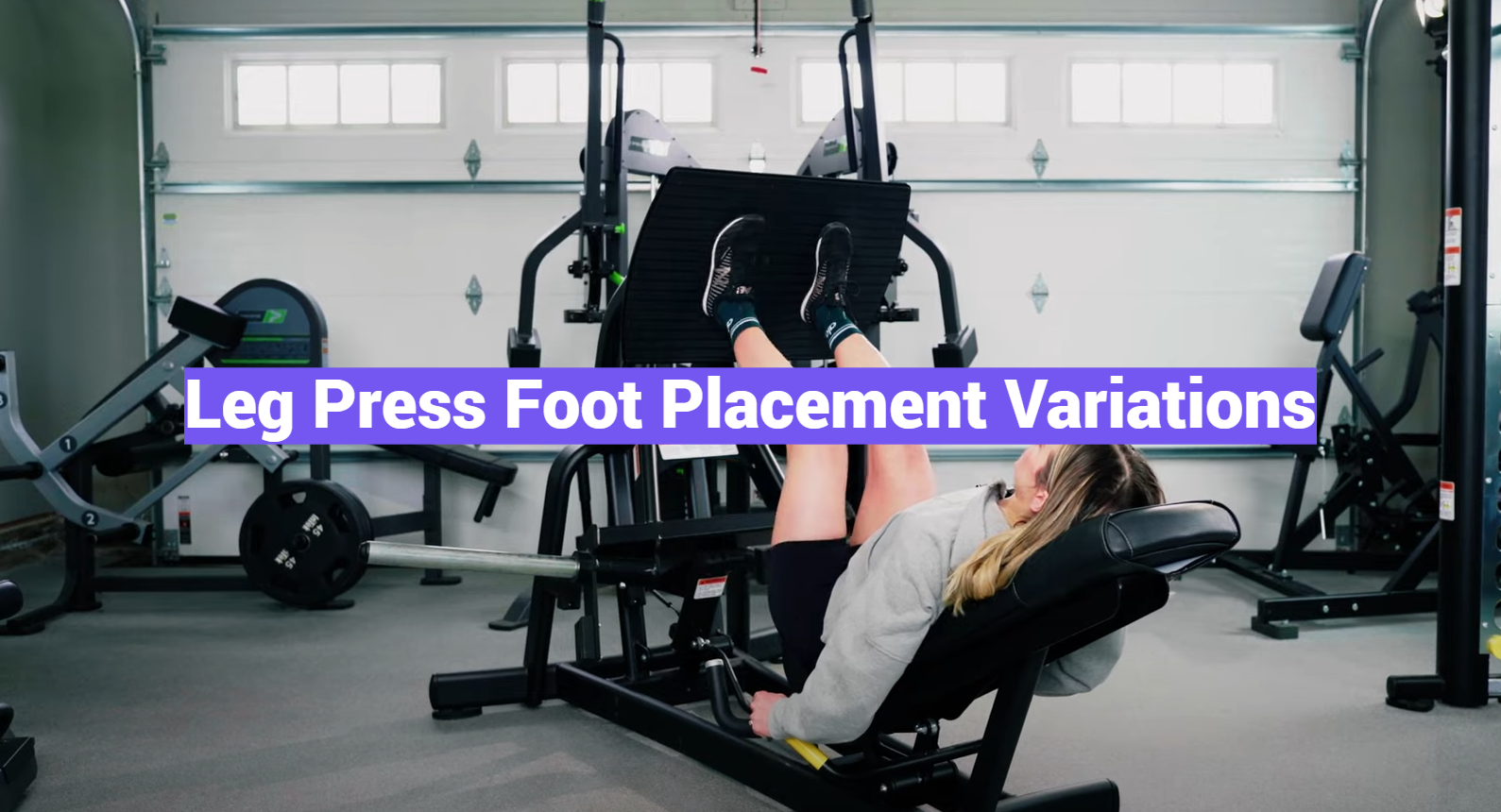The leg press is a versatile exercise machine offering myriad benefits when utilized in a well-rounded fitness regimen. One of the remarkable aspects of this machine is the ability to adjust foot placement, which allows for targeting different muscle groups in the lower body. This document provides a comprehensive guide to various leg press foot placement variations and their respective benefits to your training routine.
General Information about Leg Press Machines
The leg press machine is a popular piece of equipment in many gyms and fitness centers. It is designed to target the muscles in the lower body, specifically the quadriceps, hamstrings, and glutes. The machine consists of a seat that is positioned at an angle with a platform for your feet to push against.
One of the benefits of using a leg press machine is that it allows you to lift heavier weights compared to traditional squat exercises. This is because the weight is distributed across a larger surface area, reducing strain on your lower back and joints.
There are various types of leg press machines available, but one factor that can greatly affect the effectiveness of this exercise is foot placement.
In this article, we will discuss different foot placement variations for the leg press machine and how they can target different muscle groups. [1]
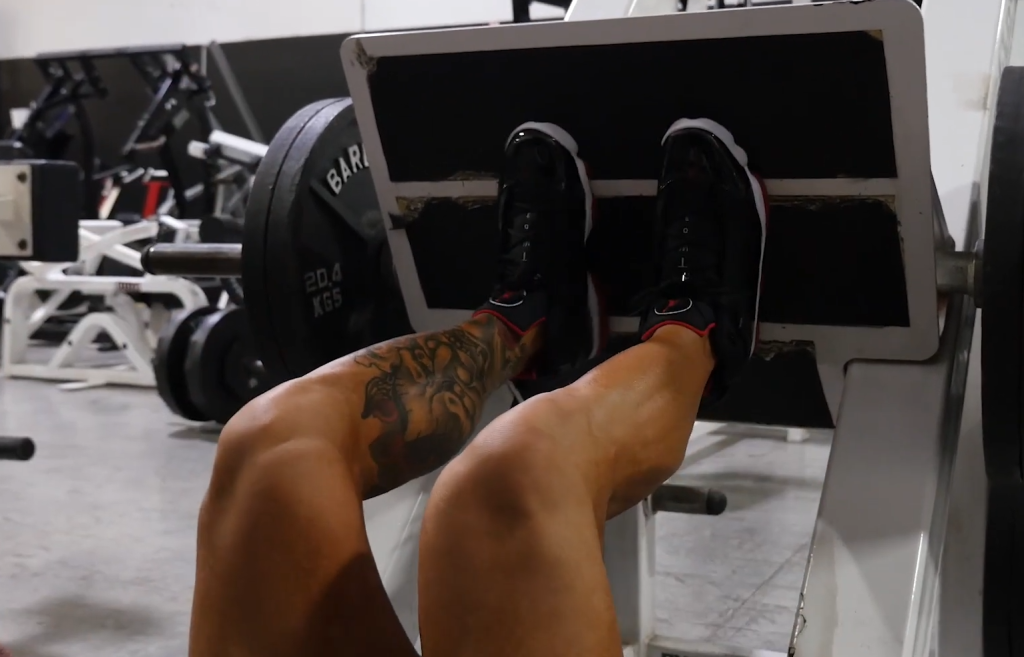
The Importance of Foot Placement
Foot placement is a crucial aspect of using the leg press machine as it can greatly impact which muscles are being targeted. By changing the positioning of your feet, you can shift the focus from your quadriceps to your hamstrings or glutes.
Additionally, incorrect foot placement can lead to improper form and increase the risk of injury. It is essential to understand how each foot placement variation affects your body so that you can choose the best option for your fitness goals.
Types of Foot Placement Variations
There are three main types of foot placement variations for the leg press machine: narrow, wide, and high.
Narrow Foot Placement
In this variation, your feet are placed close together on the platform, typically hip-width apart or less. This foot placement primarily targets the quadriceps and engages the inner thigh muscles.
Wide Foot Placement
Conversely, a wide foot placement involves positioning your feet wider than hip-width apart. This stance shifts the focus from the quads to the hamstrings and glutes. It also engages the outer thigh muscles.
High Foot Placement
The high foot placement variation involves placing your feet at the top portion of the platform, closer to your body. This targets the glutes and hamstrings more than the quads.
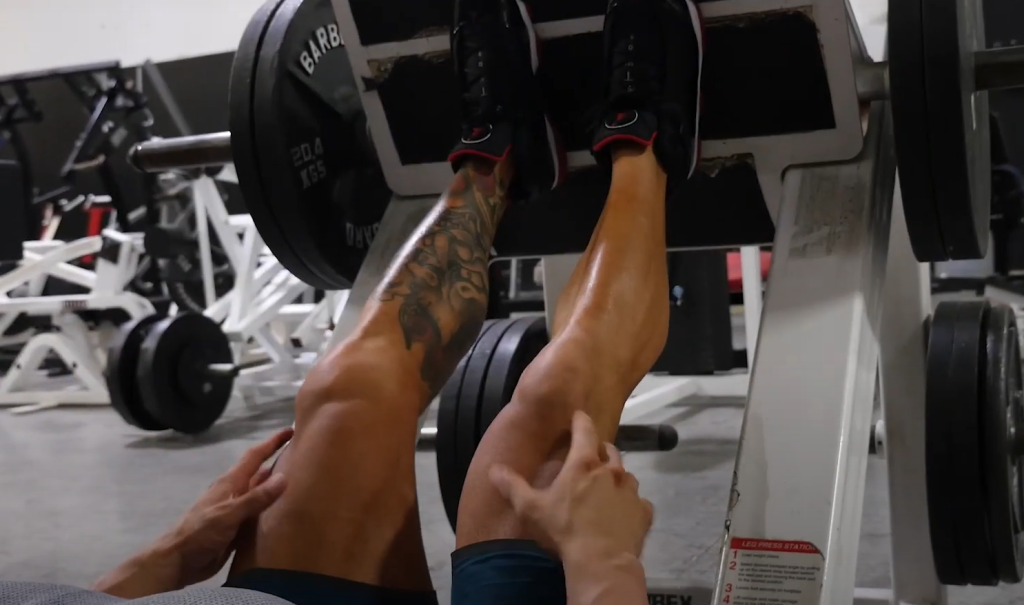
Choosing the Right Variation for Your Fitness Goals
Now that we have discussed the different foot placement variations let’s explore how they can be incorporated into your fitness routine.
If you are looking to strengthen and tone your quadriceps, the narrow foot placement is the most effective option. This variation allows for a greater range of motion and puts more emphasis on the quads.
For those who want to target their hamstrings and glutes, the wide foot placement is ideal. It also provides a deeper stretch in these muscles, making it a great option for those aiming to improve flexibility. [2]
Lastly, the high foot placement is beneficial for building strength and size in the glutes and hamstrings. It can also be used as a variation for those who have plateaued with their usual leg press routine.
Exercise Techniques for Leg Press Foot Placement Variations
Regardless of which foot placement variation you choose, it is crucial to maintain proper form during the exercise. Here are some tips to ensure you are performing each variation correctly:
- Keep your back flat against the seat at all times.
- Do not let your knees lock out when extending your legs.
- Lower the platform until your thighs are parallel to the ground for maximum effectiveness.
- Engage your core and keep your feet firmly planted on the platform throughout the movement.
Common Mistakes while doing leg press variation
As with any exercise, it is essential to be aware of common mistakes that can compromise the effectiveness and safety of your leg press workout. Some common mistakes while doing leg press variations include:
- Placing your feet too high or low on the platform.
- Not using a full range of motion by not lowering the platform enough.
- Using excessive weight and sacrificing form.
By avoiding these mistakes, you can maximize the benefits of your leg press foot placement variations and prevent injury. [3]
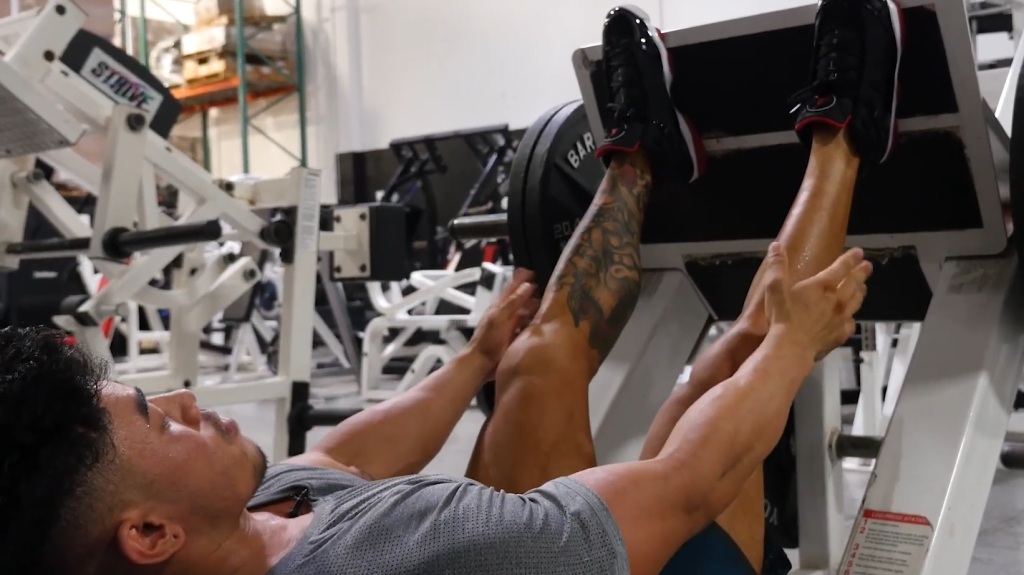
How to Incorporate Leg Press Foot Placement Variations into Your Workout Routine
The best way to incorporate leg press foot placement variations into your workout routine is by alternating between them. For example, you can perform the narrow foot placement for one week, then switch to wide foot placement the following week.
You can also use these variations as a way to challenge your muscles and prevent boredom in your routine. As with any exercise, it is important to listen to your body and adjust accordingly.
The Importance of Leg Press Foot Placement Variations
Ultimately, the key to achieving your fitness goals is by targeting specific muscle groups effectively. Leg press foot placement variations allow you to do just that while also adding variety to your workout routine.
By understanding the different foot placements and how they target different muscles, you can tailor your leg press workouts for maximum results. So next time you hit the gym, give these variations a try and see the difference it makes. Your lower body will thank you! So, if you want to focus on a specific area of your legs or simply mix up your leg press routine, consider incorporating these foot placement variations into your workout. Remember to always prioritize proper form and listen to your body for the best results.
Safety Precautions
While leg press foot placement variations can be an excellent addition to your workout routine, it is essential to practice caution and safety. Always consult a professional trainer before attempting new exercises, and start with lighter weights until you have mastered the proper form.
If at any point you feel discomfort or pain during your leg press workout, stop immediately and seek guidance from a professional. By prioritizing safety, you can continue to reap the benefits of leg press foot placement variations for a long time.
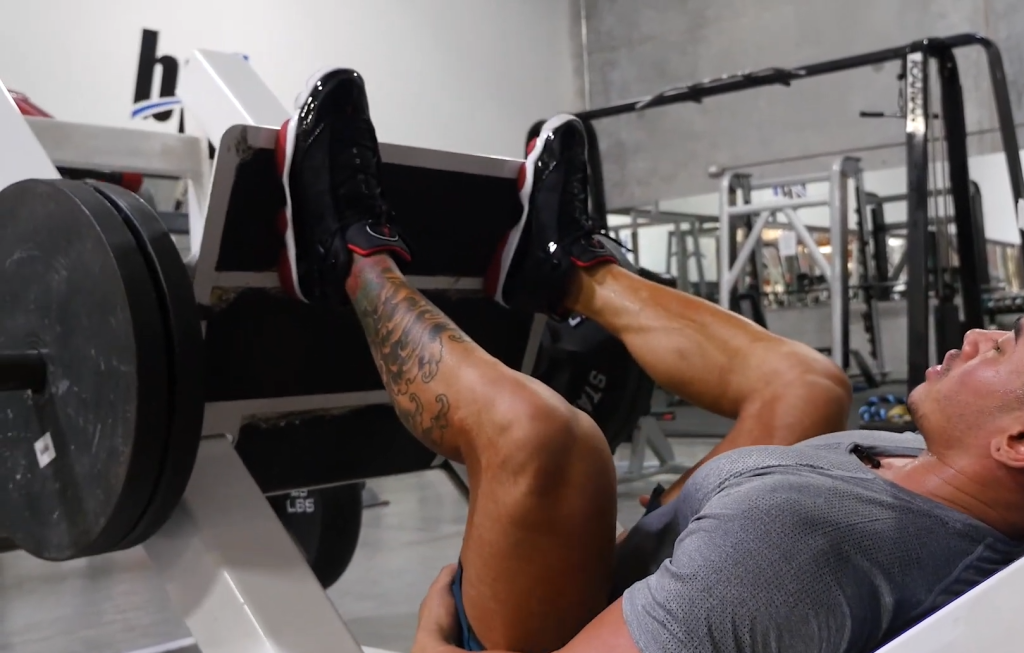
Top 15 Leg Press Foot Placement Variations and How to Perform Them
The leg press is a popular strength training exercise that primarily targets the muscles in the lower body, particularly the quads, hamstrings, and glutes. It involves pushing a weighted platform away from your body using your legs. While it may seem like a simple exercise, there are actually various variations of foot placement that can target different muscle groups and provide unique benefits.
In this article, we will explore the top 15 leg press foot placement variations and how to perform them correctly.
1. Narrow Stance Leg Press
This variation involves placing your feet close together on the platform, typically shoulder-width apart or less. This targets the outer sweep of the quads and can help improve overall leg strength. [4]
2. Wide Stance Leg Press
Conversely, the wide stance leg press involves placing your feet wider than shoulder-width apart on the platform. This targets the inner sweep of the quads and can also engage the glutes to a greater extent.
3. High Foot Placement Leg Press
In this variation, you place your feet higher on the platform, closer to your hips. This targets the glutes and hamstrings more than the traditional leg press.
4. Low Foot Placement Leg Press
The low foot placement leg press involves placing your feet lower on the platform, closer to your knees. This targets the quads more and can be helpful for building explosive power in sports performance.
5. Single Leg Leg Press
This variation involves using one leg at a time on the leg press machine. It can help to correct muscle imbalances and provide a greater challenge for stabilizing muscles.
6. Close Stance Leg Press
Similar to the narrow stance leg press, this variation involves placing your feet close together but with your toes pointed slightly inward. This targets the inner quads and can also engage the adductor muscles.
7. Sumo Stance Leg Press
The sumo stance leg press is similar to the wide stance variation, but with your toes pointed outwards. This targets the outer sweeps of the quads and can also engage the inner thighs.
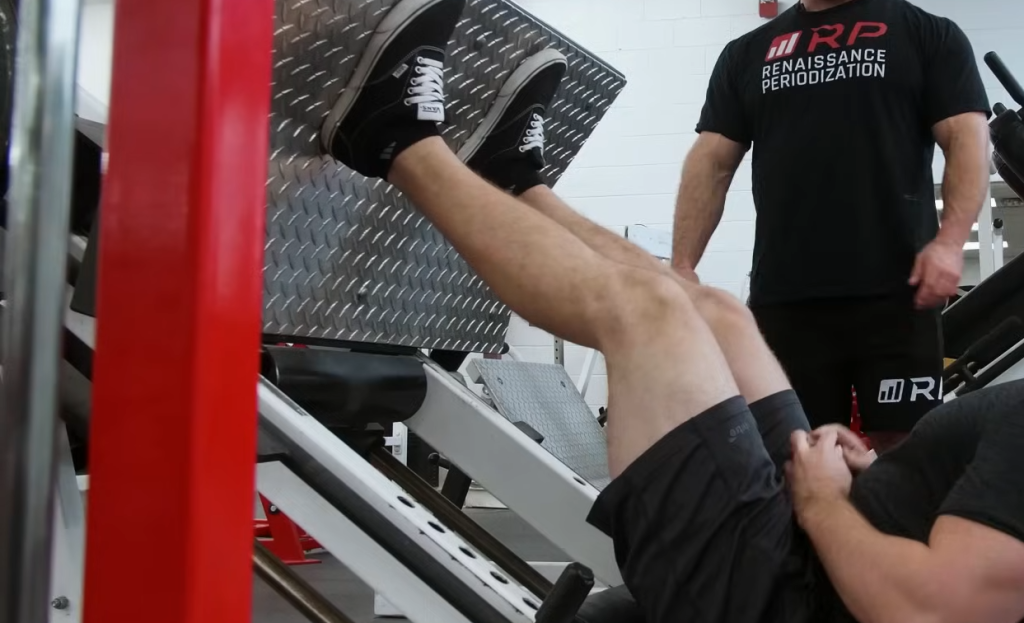
8. Feet Together Leg Press
In this variation, you place your feet close together in a traditional leg press position. However, as you push the platform away, you keep your feet together instead of separating them. This targets the quads and can help improve mind-muscle connection.
9. Single Leg High Foot Placement Leg Press
Similar to the single leg leg press, this variation involves using one leg at a time but with the foot placed higher on the platform. This targets the glutes and hamstrings more than the traditional single leg press.
10. Hack Squat Leg Press
The hack squat leg press is performed on a machine that has a similar movement pattern to the traditional leg press but with your body at an incline. This targets the quads and can help improve quad strength and size. [5]
11. Reverse Hack Squat Leg Press
This variation is similar to the hack squat leg press, but with your body at a decline instead of an incline. This targets the glutes and hamstrings more and can also engage the lower back.
12. Calf Raise Leg Press
To perform this variation, you place your feet on the bottom of the platform instead of the top. As you push the platform away, you focus on contracting your calf muscles to perform a calf raise. This targets the calves and can help improve calf strength and size.
13. Single Leg Calf Raise Leg Press
Similar to the single leg leg press, this variation involves using one leg at a time but with a calf raise movement pattern instead. This can help correct imbalances and provide a greater challenge for the calf muscles.
14. Single Leg Close Stance Leg Press
Combining two variations, this exercise involves using one leg at a time in a close stance position. This targets the inner quads and adductor muscles, providing an intense burn.
15. Explosive Leg Press
In this variation, you push the platform away with explosive power and then control the descent slowly. This targets all muscles in the legs and can help improve power and explosiveness in sports performance.
Performing these leg press foot placement variations correctly is crucial to avoid injury and achieve optimal results. Before trying any of these variations, make sure to consult a fitness professional for proper form and guidance. Incorporating these variations into your leg day routine can help you challenge your muscles in new ways and target specific muscle groups for well-rounded lower body strength. [6]
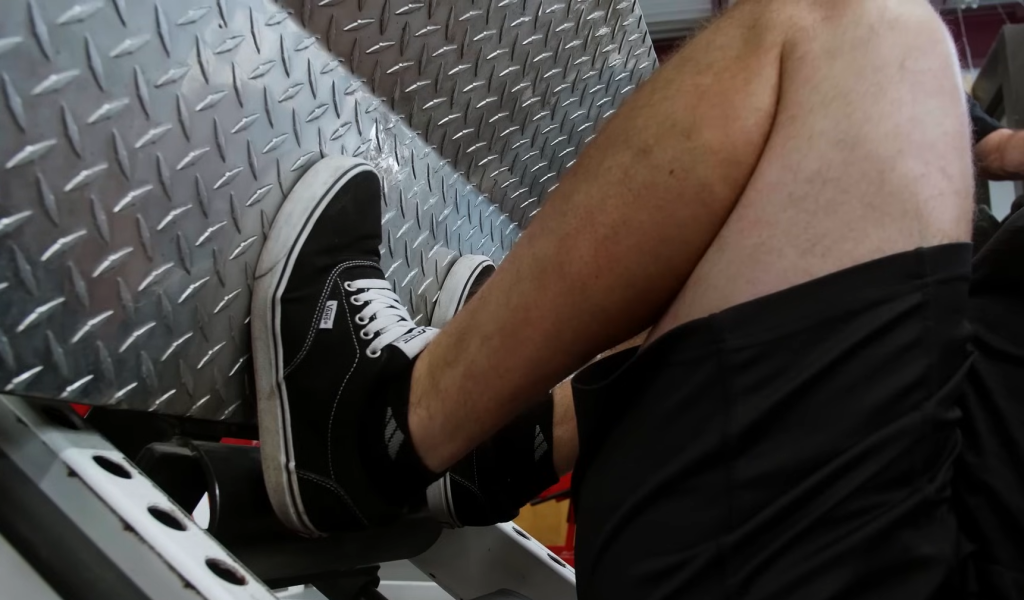
FAQs
What is the standard foot placement on the leg press machine?
The standard foot placement on the leg press machine is about shoulder-width apart, with feet parallel to each other. This position targets your quadriceps muscles predominantly.
What are the benefits of changing foot placement on the leg press?
Changing foot placement on the leg press can help target different muscle groups in your lower body. By adjusting the position of your feet, you can increase or decrease the emphasis on specific muscles such as your glutes, hamstrings, and calf muscles. This allows for a more well-rounded workout and can also prevent muscle imbalances.
How do I know which foot placement to use?
The best way to determine which foot placement to use is by identifying your fitness goals and knowing your own muscular imbalances. For example, if you are looking to target your glutes more, a wider stance with toes pointed outwards would be recommended. If you have strong quads but weaker hamstrings, placing your feet higher on the platform and closer together can help target the hamstrings.
Can changing foot placement also affect my range of motion?
Yes, changing foot placement can also affect your range of motion. Placing your feet lower on the platform can increase your range of motion, while placing them higher can decrease it. This is due to the angle at which your knees bend during the exercise.
Are there any safety considerations when changing foot placement?
It is important to always use proper form and technique when using the leg press machine, regardless of foot placement. However, when changing foot placement, it is crucial to make adjustments slowly and gradually to avoid any strain or injury. It is also recommended to consult with a trainer or fitness professional for proper guidance on foot placement variations.
What muscle groups does a high foot placement on the leg press target?
A high foot placement on the leg press primarily targets the hamstrings, glutes, and calf muscles. This position puts more emphasis on pushing through the heels rather than the toes, allowing for a deeper contraction in these muscle groups. It can also engage your core muscles to a higher degree as you stabilize yourself during the exercise. Some experts also recommend this foot placement for targeting the outer thigh muscles (abductors). Overall, this variation can help improve overall lower body strength and stability.
Is there a specific foot placement for beginners?
For beginners, it is recommended to start with the standard foot placement on the leg press machine. This allows for a familiar and stable position while learning proper form and technique. As you progress and become more comfortable with the exercise, you can experiment with different foot placements to target specific muscle groups. It is important to always listen to your body and not push yourself too hard, especially when starting out.
Can I use a narrow foot placement on the leg press for a wider range of motion?
Yes, using a narrow foot placement on the leg press can increase your range of motion. This is because having your feet closer together can allow for a deeper knee bend, allowing you to use a wider range of motion during the exercise. However, it is important to note that using a narrow foot placement may also put more strain on your knees and lower back, so it is important to proceed with caution and stop if you experience any discomfort.
Is it necessary to use all foot placement variations on the leg press?
It is not necessary to use all foot placement variations on the leg press. In fact, it is recommended to stick with a few key variations that target your specific fitness goals and muscle imbalances. It is important to also switch up your foot placement regularly to prevent plateaus and continue challenging your muscles. As always, proper form and technique should be the top priority during any exercise. So, it is important to use only those variations that are comfortable and appropriate for your body. Experimentation with different foot placements can also help you find what works best for you.
Can I combine different foot placements in one leg press workout?
Yes, you can definitely combine different foot placements in one leg press workout. This can help target multiple muscle groups and provide a more well-rounded lower body workout. For example, you can start with a standard foot placement for a few sets, then switch to a high foot placement for the next few sets, and end with a narrow foot placement. Be sure to allow for proper rest and recovery between each set to avoid fatigue or injury. It is also important to keep track of the weight and number of repetitions for each foot placement to monitor progress and ensure proper progression in your workout routine.
Can I use the leg press without changing foot placement?
Yes, you can still benefit from using the leg press machine without changing foot placement. The standard foot placement targets your quadriceps muscles, which are important for activities such as walking and climbing stairs. By increasing the weight or number of repetitions, you can still challenge and strengthen these muscles effectively. However, adding in different foot placements can help prevent muscle imbalances and provide a more comprehensive lower body workout.
How often should I change my foot placement on the leg press?
There is no set frequency for changing foot placement on the leg press. It ultimately depends on your fitness goals and personal preference. Some people may prefer to change their foot placement every workout, while others may stick with one or two variations for a longer period of time. As mentioned before, it is important to monitor progress and switch up your routine regularly to avoid plateauing. It is also important to listen to your body and not push yourself too hard, as it can take time for your muscles to adapt to new foot placements. Consulting with a trainer or fitness professional can also provide guidance on proper progression and foot placement variations based on your individual needs.
What muscle groups does a low foot placement on the leg press target?
A low foot placement on the leg press primarily targets the quadriceps muscles. This is because having your feet lower on the platform puts more emphasis on pushing through the toes rather than the heels, allowing for a deeper contraction in these muscle groups. It can also engage your glutes and calf muscles to a lesser degree during the exercise. Some experts also recommend this foot placement for targeting the inner thigh muscles (adductors). However, it is important to note that using a low foot placement may also put more strain on your knees and lower back, so proper form and technique are crucial.
Conclusion
In conclusion, there are various foot placement variations on the leg press that target different muscle groups and have their own benefits and considerations. It is important to find what works best for your body and fitness goals, while also regularly changing up your routine to avoid plateaus. Proper form and technique should always be prioritized, and it may be helpful to consult with a professional for personalized guidance. With the proper use of foot placement variations, the leg press can be a valuable exercise for improving lower body strength and stability. So, keep experimenting and challenging yourself to see what works best for you! Happy lifting!
Useful Video: How to LEG PRESS for Glutes | Improve Your Technique & Grow More Muscle
References:
- https://powerliftingtechnique.com/leg-press-foot-placement/
- https://strengthwarehouseusa.com/blogs/resources/leg-press-foot-placement-variations
- https://medium.com/@fitthour/mastering-leg-press-machine-foot-placement-techniques-f2b5e410d749
- https://worldfitness.com.au/blogs/health-fitness-blogs/5-leg-press-variations
- https://1upnutrition.com/blogs/training/leg-press-foot-placement-variations
- https://www.insider.com/leg-press-workout-variations-build-quads-glutes-hamstrings-muscle-2022-6

